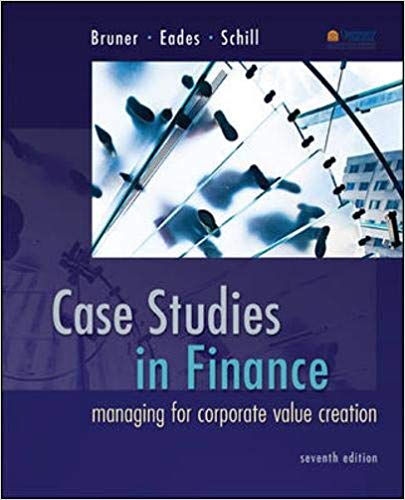1. As Disneys CEO, would you buy back the Disney shares from Saul Steinberg? If so, why...
Question:
1. As Disney’s CEO, would you buy back the Disney shares from Saul Steinberg? If so, why and at what price? If not, why not?
2. What is the meaning of these different valuations? Why not just ask an accountant to tell us what Disney is worth? How, in an efficient stock market, can there be a valuation discrepancy this big?
3. Ron Miller, the CEO, said, “We have created unique value along with competitive and strategic advantage.” What are the unique value and advantage to which he refers? Please be as specific as possible for each business segment.
4. Is Disney excellent in financial terms? How do you define excellence? Why is operational success not automatically accompanied by financial success?
5. Should Ron Miller pay greenmail?
This case is set in the midst of the attempted takeover of Walt Disney Productions by the raider Saul Steinberg in June 1984. Disney’s chief executive officer ponders whether to fight the takeover or pay “greenmail.” One significant influence on the decision is the “true” value of the firm. The case offers, either directly or through analysis, several estimates of value. The valuation question invites a review of Disney’s past performance and current competitive position. Other significant influences on the decision are the ethics and economics of paying greenmail. Ultimately, any judgment of Disney’s true value hinges on expectations concerning the cash flows potentially available under a new and aggressive management team. The epilogue to the takeover attempt (summarized in Exhibit TN6 and distributable to students at the instructor’s discretion) highlights the actions taken to unlock that hidden value.
The rich range of issues raised in the case (strategy, valuation, performance measurement, and ethics) helps make it an effective first case, review case, or final exam in a corporate-finance course. The case was written for the following purposes:
- To motivate a discussion of “excellence” from a corporate-financial point of view and of the ways in which excellence might be measured
- To review and compare various valuation methodologies and suggest some explanations for the disparities among the results
- To show that corporate value depends heavily on industry conditions and the strategic choices managers make
Step by Step Answer:

Case Studies in Finance Managing for Corporate Value Creation
ISBN: 978-0077861711
7th edition
Authors: Robert F. Bruner, Kenneth Eades, Michael Schill





